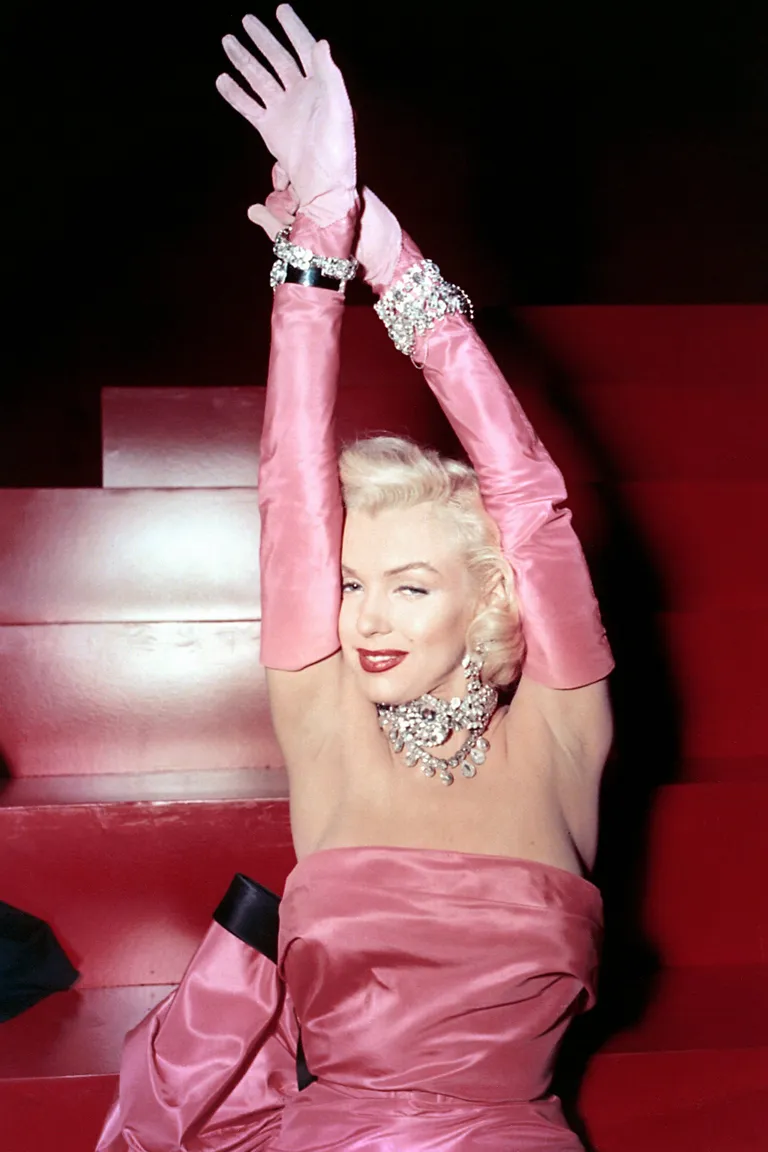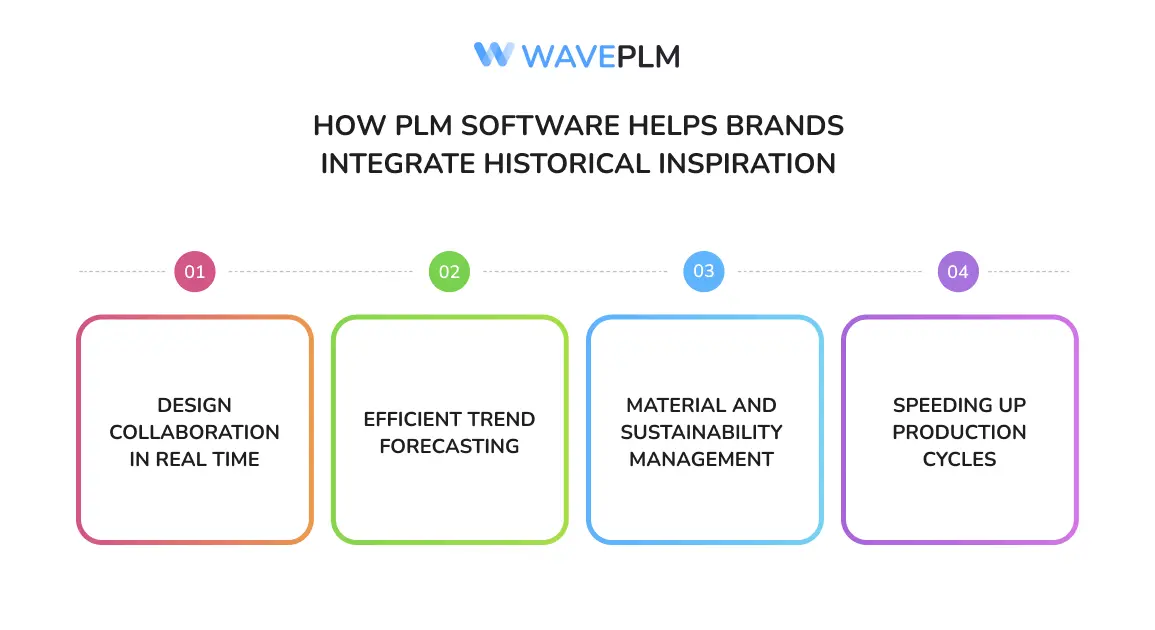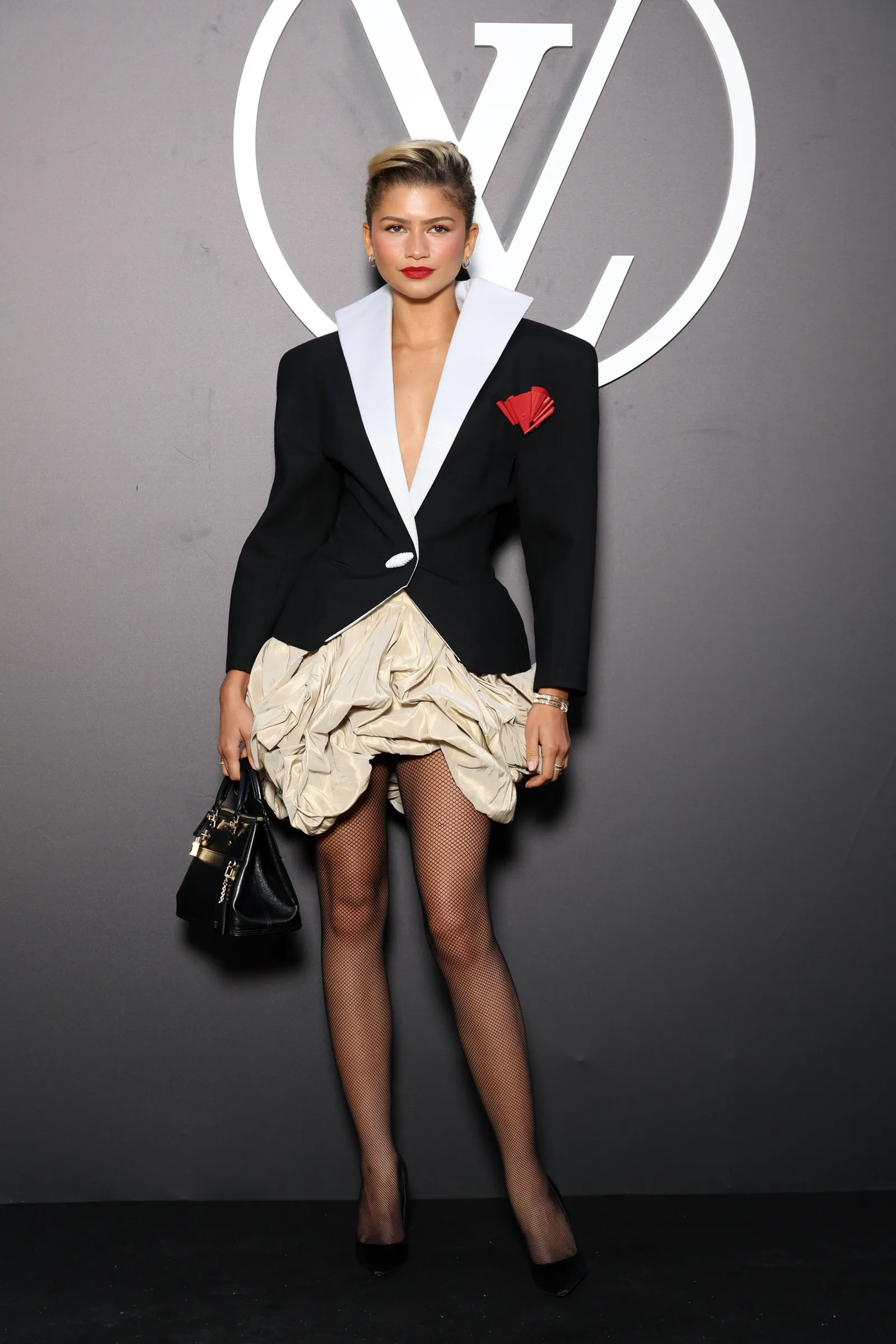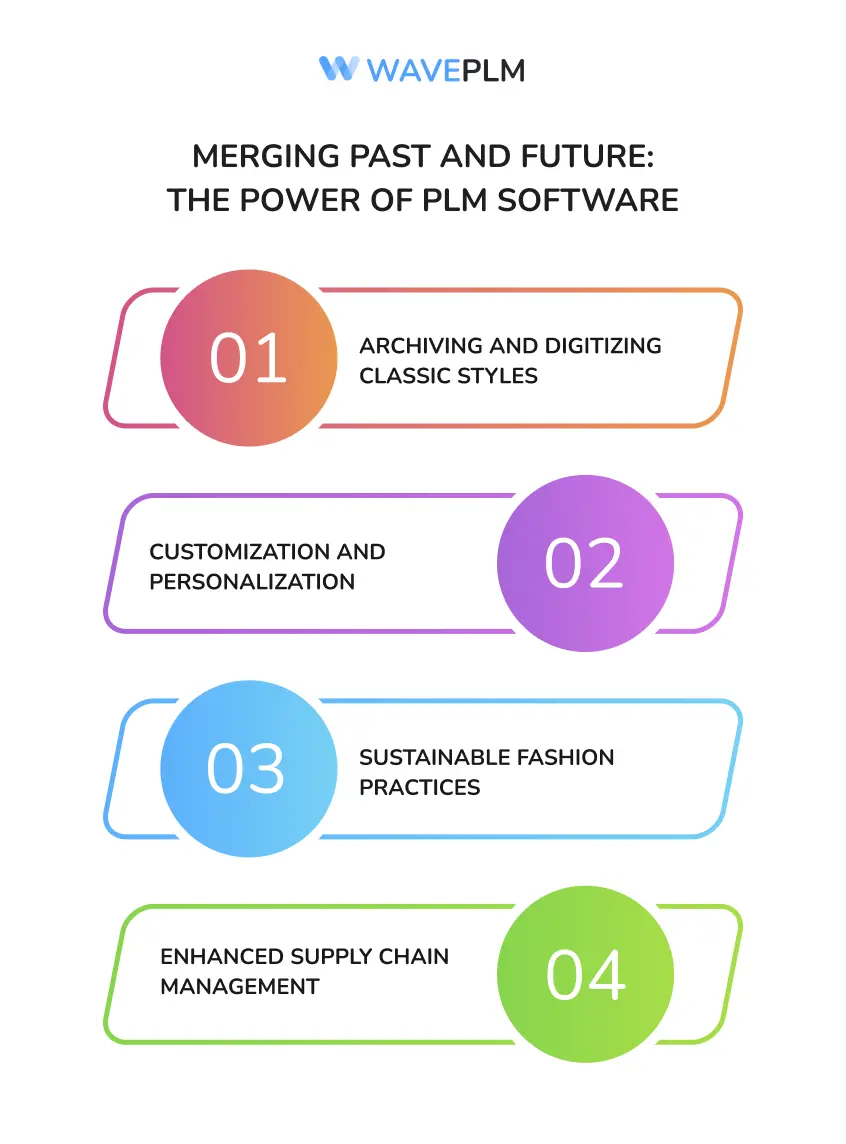
The fashion world constantly evolves, but certain style icon outfits remain timeless. The elegance of 1950s fashion icons like Audrey Hepburn and Marilyn Monroe or the effortless charm of 1960s fashion icons like Brigitte Bardot and Grace Kelly inspires designers today and influences fashion trends. Their iconic looks, from the classic black dress to ballet flats and high-waisted silhouettes, still influence high fashion and street style alike.
In today’s fashion industry, brands blend historical fashion trends with modern innovation. Celebrity fashion icons set new standards while drawing inspiration from historical fashion icons. Social media amplifies these influences, making it easier for designers to understand what resonates with consumers in real-time.
To manage this changing environment, brands use fashion software. They especially rely on PLM software. This helps them simplify design and production processes. At the same time, they stay true to classic inspirations.
The Lasting Influence of 1950s and 1960s Fashion Icons
The 1950s and 1960s introduced some of the most fashion iconic figures whose styles define elegance and sophistication.
- Audrey Hepburn: The epitome of timeless fashion, Hepburn made the little black dress a wardrobe essential. Her ballet flats, tailored pants, and black and white ensembles remain a staple in modern wardrobes. Her understated yet polished look continues to shape contemporary fashion trends, especially in minimalistic and elegant styles.
- Marilyn Monroe is famous for her glamorous red carpet-gowns. Her fitted styles and bold look still inspire today’s designers. Many modern brands emulate her signature form-fitting dresses and high-waisted styles to evoke classic Hollywood glamour.
- Grace Kelly: Her sophisticated, ladylike fashion sense, including full skirts and Christian Dior designs, defines high fashion elegance. Even today, many bridal and eveningwear designers take cues from her graceful and polished aesthetic.
- Brigitte Bardot: A pioneer of casual yet chic fashion, Bardot’s off-the-shoulder tops, leather jackets, and high-waisted trousers remain key fashion trends. Her effortless, rebellious style laid the foundation for modern boho-chic and rock-inspired fashion.
These women fashion icons set the foundation for many of today’s trends. Their influence extends beyond personal style, shaping collections that reinterpret past aesthetics with a modern twist. Today’s designers and stylists use classic elements to create new styles. They keep the original designs authentic.

The Role of Fashion Software in Managing Product Development
While historical fashion trends inspire designers, turning these influences into market-ready collections requires advanced tools. Fashion software, particularly PLM software, plays a crucial role in managing product lifecycles, from initial design to final production. The ability to maintain historical accuracy while innovating requires robust data tracking, design collaboration, and production management.
How PLM Software Helps Brands Integrate Historical Inspiration
- Design Collaboration in Real Time: PLM tools enables design teams to work together seamlessly. Teams can share ideas, sketches, and material choices right away. They can reference 1960s fashion icons or create a modern street-style collection. This collaborative process ensures that every garment maintains the intended aesthetic while adapting to modern production needs.
- Efficient Trend Forecasting: By analyzing historical data and current fashion trends, brands can predict consumer preferences. Social media analytics and high fashion runway insights help in refining designs inspired by past fashion icon outfits. This predictive approach allows brands to stay ahead of consumer demand and adjust their collections accordingly.
- Material and Sustainability Management: Managing product development efficiently requires selecting the right fabrics and production methods. PLM software helps brands track resources well. It can reimagine a black dress using eco-friendly materials. It can also update leather jackets for sustainability. Many brands also use PLM systems to align with sustainability goals by ensuring materials meet ethical standards.
- Speeding Up Production Cycles: The fashion industry moves fast. Brands must quickly turn inspiration into sellable collections. With fashion software, they can streamline sourcing, sampling, and manufacturing to meet market demands without sacrificing creativity. By reducing inefficiencies in production, brands can maintain their market relevance while staying true to their design heritage.

Current Fashion Icons Keeping Classic Styles Alive
While past style icons continue to influence fashion, current fashion icons reinterpret their legacy for modern audiences. Social media has amplified their reach, making them powerful trendsetters. The ability to merge past inspirations with contemporary fashion innovations has defined today’s leading fashion influencers.
- Zendaya: Her red carpet looks often nod to historical fashion icons. She effortlessly merges vintage aesthetics with futuristic designs. Her ability to blend classic silhouettes with avant-garde fashion keeps her on the cutting edge of high fashion.
- Rihanna: A master of personal style, Rihanna’s bold choices often include high-waisted silhouettes, leather jackets, and statement accessories. Her daring approach to fashion reinvents past trends with a modern, edgy twist.
- Timothée Chalamet: Known for pushing menswear boundaries, he often wears high fashion pieces inspired by past eras. His gender-fluid approach to fashion redefines traditional menswear by incorporating historical elements with modern tailoring.
- Taylor Swift: Her affinity for vintage styles, including classic black and white outfits and old Hollywood glamour, connects modern fashion to its roots. Her fashion choices often celebrate the classic style of 1950s and 1960s fashion icons. At the same time, they stay relevant to modern trends.
Brands leverage apparel PLM software to adapt these influences into collections that resonate with consumers. By integrating historical references with cutting-edge fashion software, they ensure their designs remain relevant and innovative. The balance between nostalgia and contemporary innovation is key to a successful fashion line.

Merging Past and Future: The Power of PLM Software
The key to sustaining a fashion brand lies in balancing timeless elegance with modern technology. PLM software allows brands to stay agile while preserving the essence of fashion icon outfits. This ensures that brands maintain consistency across collections while introducing innovative design concepts.
- Archiving and Digitizing Classic Styles: Fashion software helps brands store and analyze past collections. Whether referencing Christian Dior’s designs or Grace Kelly’s wardrobe, designers can access digital archives for inspiration. This database allows brands to ensure continuity while modernizing historical aesthetics.
- Customization and Personalization: With the rise of AI-driven design, brands use PLM software to offer customized looks inspired by historical fashion icons. Personalized styling recommendations enhance customer engagement, allowing consumers to purchase garments that reflect both past and present influences.
- Sustainable Fashion Practices: The industry is shifting towards ethical production. Fashion PLM ensures that brands integrate sustainable materials without compromising on historical aesthetics. This supports eco-conscious fashion initiatives while maintaining timeless style influences.
- Enhanced Supply Chain Management: The fashion industry must adapt to global supply chain challenges. PLM software provides brands with real-time tracking, enabling them to streamline production and reduce waste while upholding high-quality standards.

Conclusion: The Future of Fashion Innovation
Fashion is an evolving dialogue between the past and present. The influence of 1950s and 1960s fashion icons remains strong, shaping everything from red-carpet gowns to everyday street style. Through PLM software like Wave PLM, brands can efficiently manage product development, ensuring that fashion icon outfits continue to inspire generations.
By leveraging fashion software, brands create collections that honor historical fashion icons while embracing the future. Whether inspired by Audrey Hepburn’s elegance, Marilyn Monroe’s boldness, or Brigitte Bardot’s effortless charm, the fusion of history and innovation defines the next era of fashion. The fashion industry’s ability to merge tradition with cutting-edge technology ensures that timeless style remains relevant in an ever-changing world.





Leave a Reply